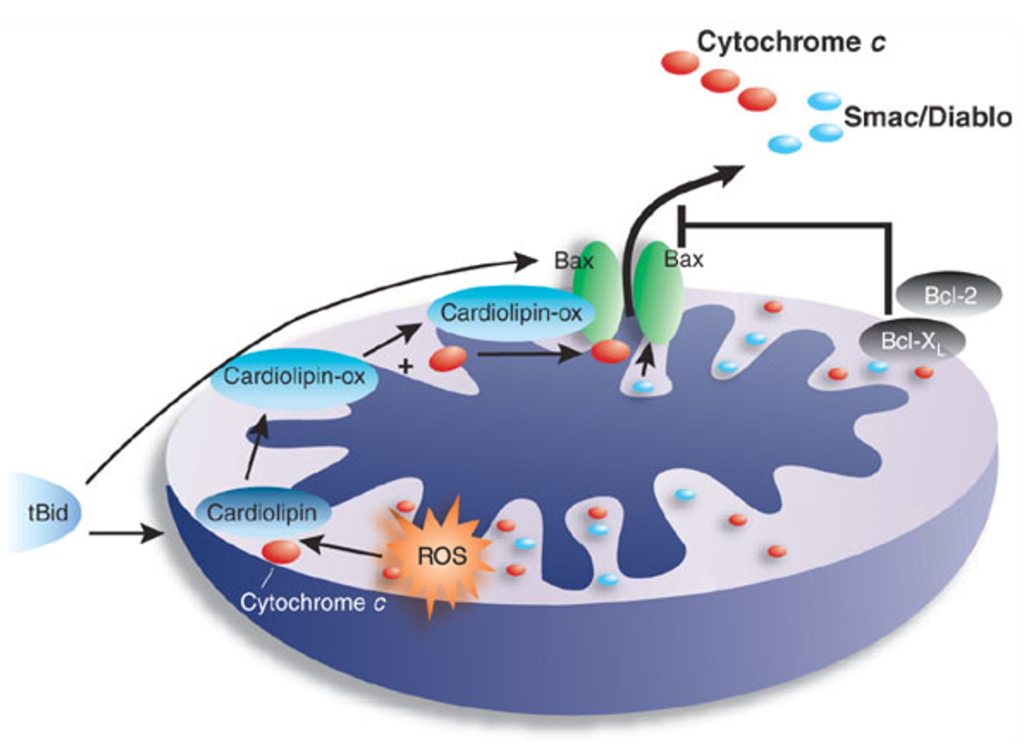Interesting facts from the world of organic chemistry
Derivatives - lipids:
Cardiolipin
Cardiolipin is a phospholipid found in the biological membranes of most bacteria. Cardiolipin is composed of two glycerol molecules to which two fatty acids and two phosphoric acid molecules are attached. A glycerol residue containing two phosphatidyl groups is attached to one of the phosphoric acid molecules.
Cardiolipin occurs in two forms:
1) The bilayer form, which is the most common, consists of two layers of cardiolipid that are arranged so that their glycerol residues face outward and their fatty acids inward.
2) The monolayer form, which occurs in certain cell membranes, is made up of only one layer of cardiolipid.
Cardiolipin is an important component of the inner mitochondrial membrane, where it represents up to 20% of the total amount of lipids. Its name actually comes from a derivation of the name for heart, from which it was also first isolated. The first successful isolation of cardiolipin from the animal heart took place in the early 1940s.

Picture above: Schematic of the general structure of cardiolipin
Cardiolipin can be found not only in animal cells, but also in plant cells. Here it is found almost exclusively in the aforementioned inner mitochondrial membranes, as shown in the figure on the right.
The image on the right shows the location of cardiolipin molecules in mitochondria.
If we wanted to know the exact mechanism of cardiolipin biosynthesis, we would have to delve into the issue and function of the tyrosine phosphatase named PTPMT1, or the protein that was the first to be found in mitochondria, but with an unknown function at the time. It was later shown that PTPMT1 plays an indispensable role in development and its deficiency causes abnormal mitochondrial morphology. If PTPMT1 is low, then there is also a low amount of phosphatidylglycerol and especially phosphatidylglycerol phosphate (PGP) in the mitochondria. And it is PGP that is an essential intermediate in the cardiolipin biosynthetic pathway, which in the mitochondria has the task of regulating membrane integrity and organelle activity.

Picture: Area of occurrence of cardiolipin molecules in mitochondria
Resources:
[1] M. PANGBORN, “Isolation and Purification of a Serologically Active Phospholipid from Beef Heart,” J. Biol. Chem., vol. 143, pp. 247-256, 1942.
[2] S. ORRENIUS and B. ZHIVOTOVSKY, “Nature – chemical biology,” 2005. [Online]. Available: http://www.nature.com/nchembio/journal/v1/n4/images/nchembio0905-188-F1.jpg. [Accessed 9 6 2013].
[3] J. ZHANG, Z. GUAN and et al, “Cell Metabolism,” 8 5 2011. [Online]. Available: http://ac.els-cdn.com/S1550413111001744/1-s2.0-S1550413111001744-main.pdf?_tid=15b4ce9c-d0d4-11e2-a195-00000aab0f01&acdnat=1370762189_c4527ecef19c 30e4734d8dbefd5b941f. [Accessed 9 6 2013].
